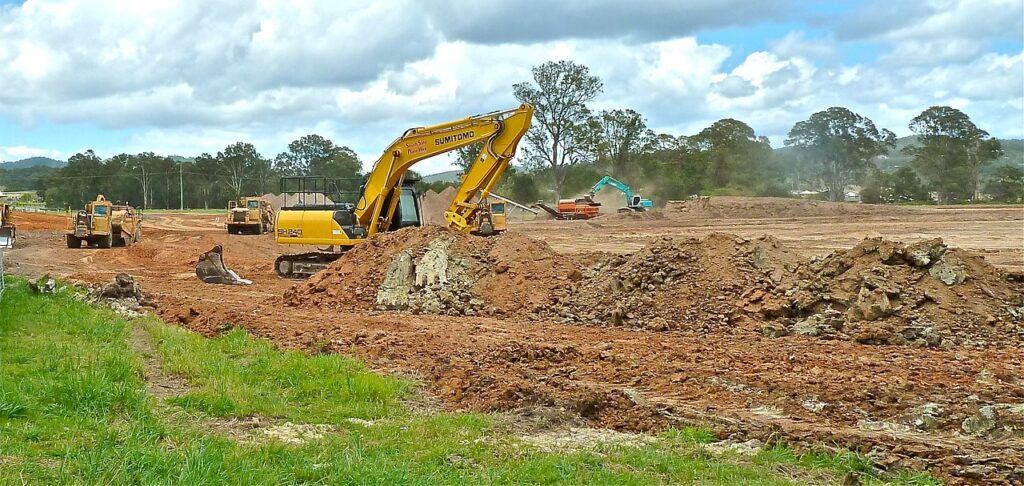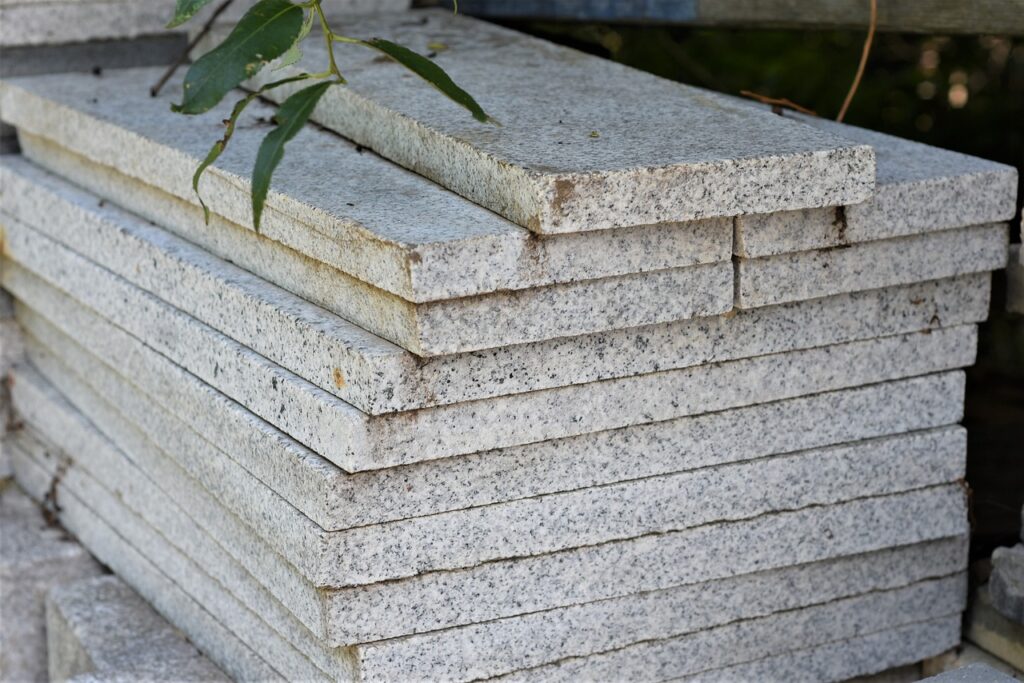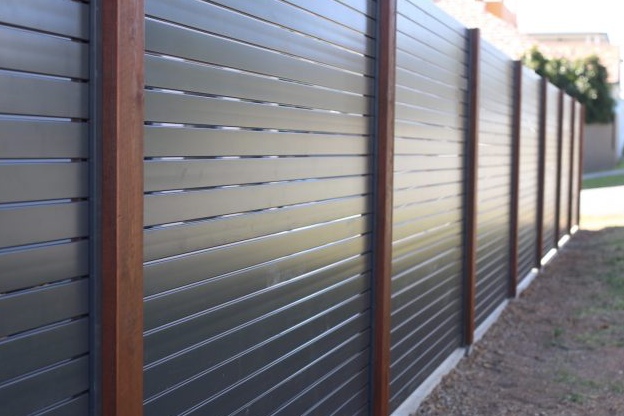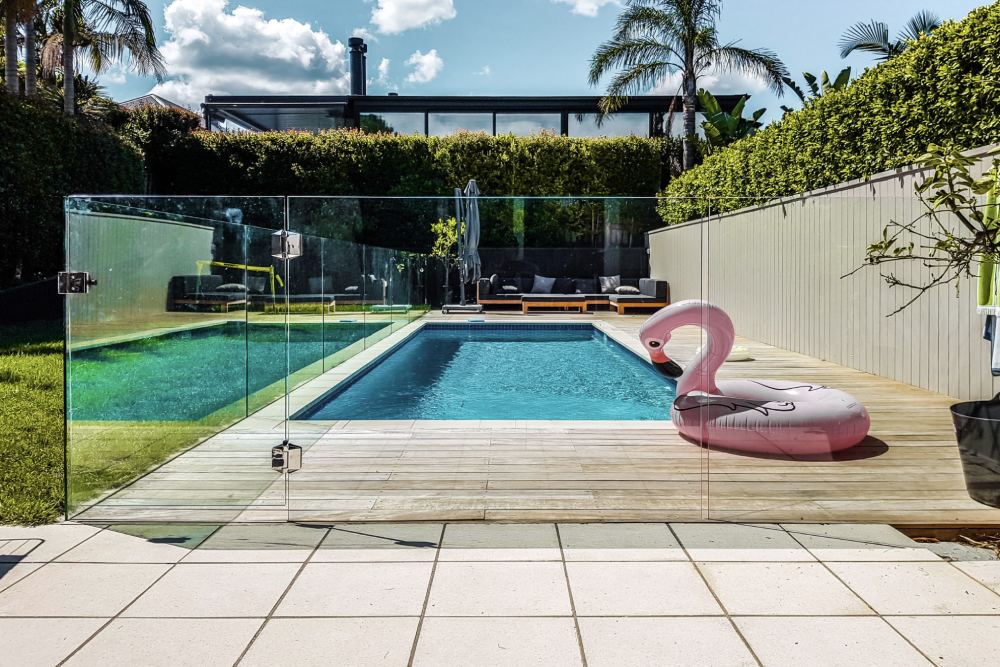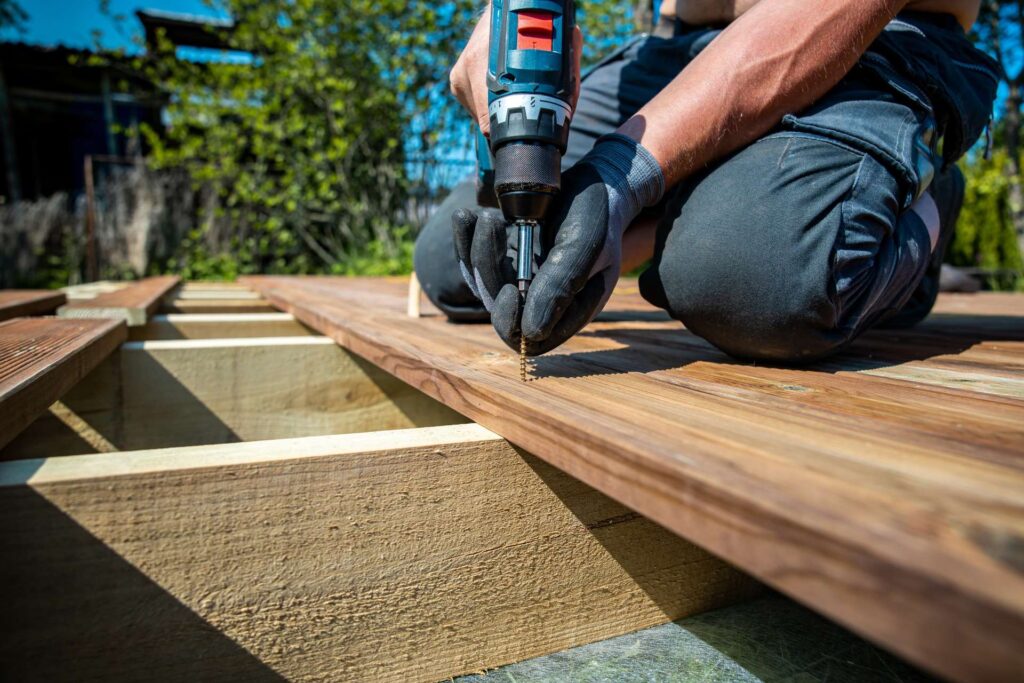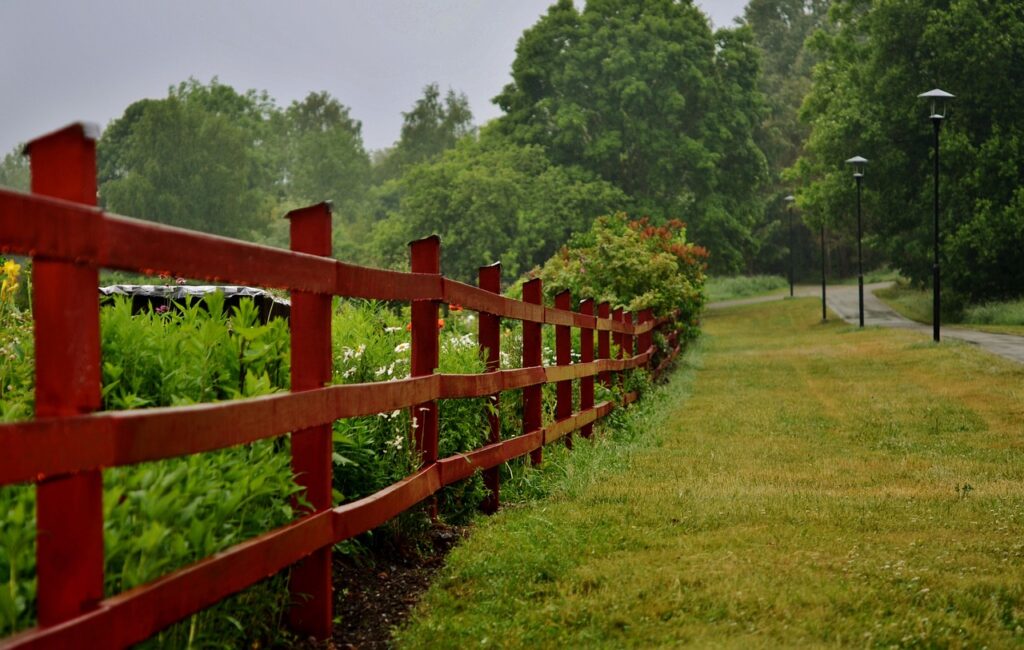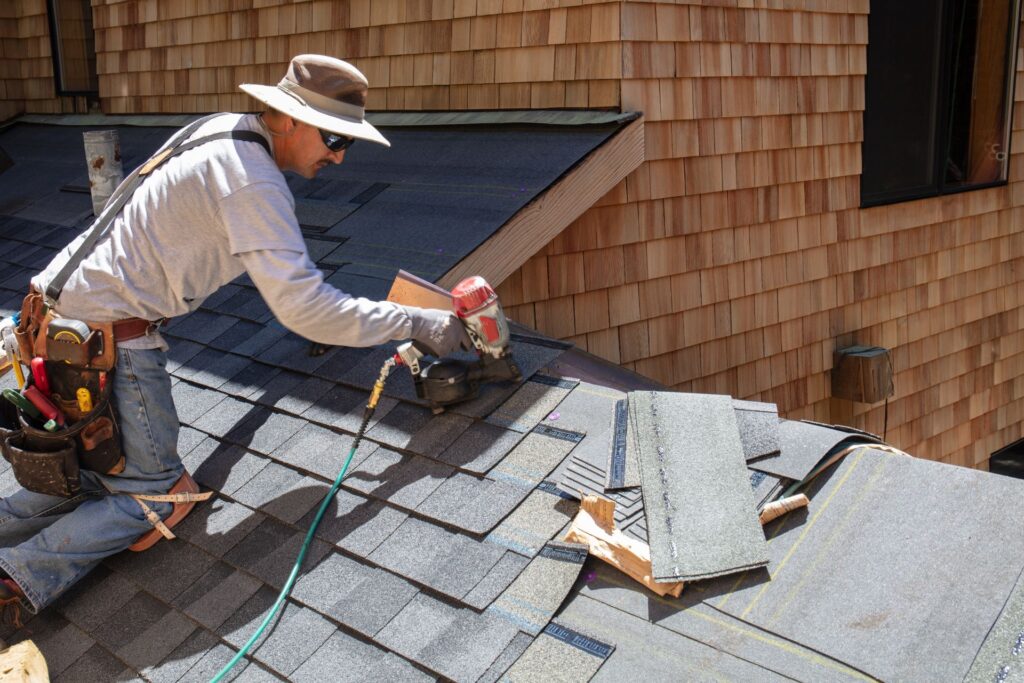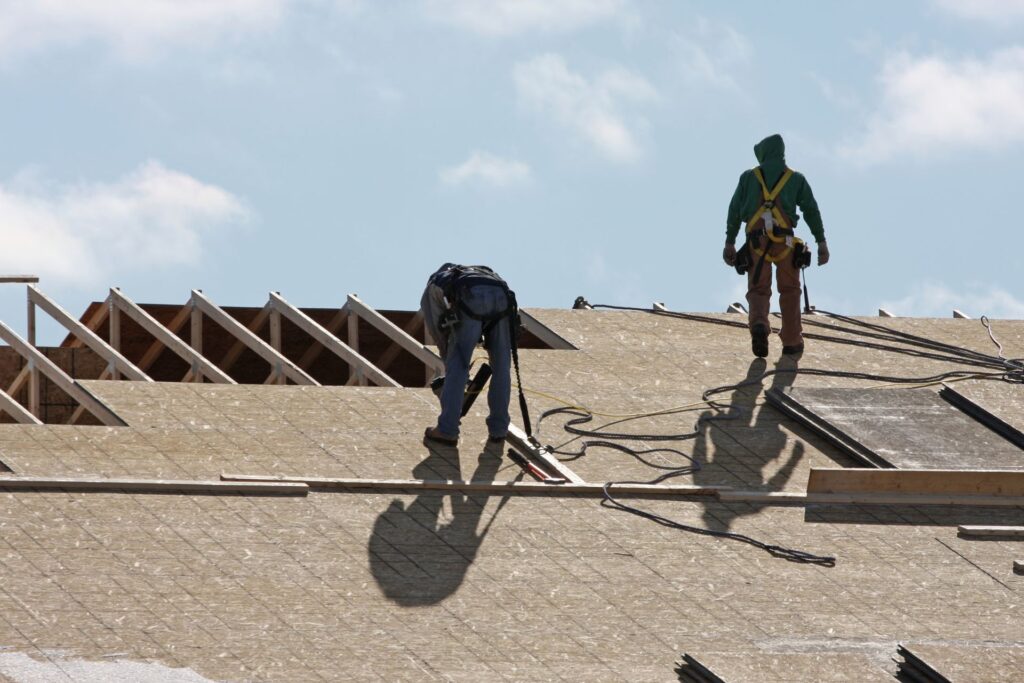Decks are more than just outdoor spaces in New Zealand homes; they’re extensions of our living areas, places where memories are made, and a retreat to enjoy the beauty of our surroundings. Recognizing the value of a well-constructed deck isn’t just about the immediate enjoyment it provides but also its potential to enhance property value. This guide aims to demystify the various factors that influence deck costs in NZ, ensuring you’re equipped with the knowledge to plan your deck project effectively.
The cost of a deck in NZ is between $150 to $400 per square meter, the cost can depend on choices around materials, design, size, and labor. Opting for treated pine presents the most economical option, while premium hardwoods and composites provide durability at a higher initial investment. Effective planning, careful budgeting, and selecting an experienced contractor are crucial for a deck that adds value and enjoyment to your home without exceeding your financial limits.
Factors Influencing Deck Costs In NZ
Creating a deck can significantly enhance the outdoor living space of your home, offering a perfect spot for relaxing, entertaining, and enjoying the beauty of New Zealand’s landscape. However, the cost of building a deck can vary widely depending on several factors. Understanding these factors will help you budget more accurately and make informed decisions throughout the project. Here’s a detailed explanation of the factors influencing deck costs in NZ, written in a natural, human tone to ensure readability and SEO optimization.
Material Choices
The choice of material is one of the most significant factors affecting the cost of your deck. Common materials used in NZ include treated pine, hardwoods like kwila, and composite materials.
1. Treated Pine
It’s the most cost-effective option, suitable for those on a tighter budget. However, it might not last as long as other materials and requires regular maintenance.
2. Hardwoods
Kwila and other hardwoods are popular for their durability and longevity. They are more expensive than treated pine but offer a premium look and feel.
3. Composite Materials
Composite decking, made from a blend of wood fibers and plastic, is durable, low maintenance, and resistant to rotting and insects. It’s an eco-friendly option but comes at a higher price point.
Size And Complexity
The overall size of your deck is a straightforward factor: larger decks require more materials and labor, increasing the cost. Complexity also plays a role; intricate designs with multiple levels, stairs, or built-in features like seating or planters will be more expensive to construct than a simple, single-level deck.
Labor Costs
Labor costs can vary significantly depending on the contractor you choose and the time of year. Experienced contractors might charge more, but the quality of work can justify the extra expense. Additionally, building a deck during peak construction seasons can be more expensive due to the higher demand for labor.
Location And Accessibility
The location of your property can influence deck costs. If your home is in a remote area, transportation of materials might be more expensive. Accessibility is also a factor; a site that’s difficult to access can increase labor costs as it takes more time to bring materials to the site and may require additional equipment.
Permits And Regulations
In New Zealand, certain types of deck construction may require building consent from the local council, especially if the deck is over a certain height or size. The cost of obtaining these permits can add to the overall expense, and it’s important to factor in these administrative costs. Additionally, compliance with the Building Code and local regulations may influence the design and materials you can use, potentially affecting costs.
Additional Features
Extras such as railings, steps, built-in lighting, or custom design features will increase the total cost of your deck. While these elements can enhance the functionality and aesthetic appeal of your outdoor space, they require additional materials and labor.
Future Maintenance
The long-term maintenance costs should also be considered. Materials like treated pine might require more frequent staining or sealing compared to more durable options like composite decking, which could affect the overall cost over the life of the deck.
Building a deck in New Zealand is a worthwhile investment that can enhance your home’s outdoor living space and increase its value. By understanding the factors that influence deck costs, you can make informed decisions that balance your budget with your vision for the space. Remember to consult with professionals to get accurate quotes and ensure your deck is built to last, complying with all local regulations and standards.

Planning Your Budget
Estimating Your Deck Cost
Embarking on the journey to create your dream deck is an exciting venture that can significantly enhance the outdoor living space of your home. However, understanding and estimating the cost involved in this project is crucial to ensure that it aligns with your budget and expectations. The process of estimating the cost of your deck involves several key steps that will help you create a realistic budget and avoid any unexpected expenses.
1. Define The Size Of Your Deck
The first and most critical step in estimating your deck cost is to clearly define the size of the deck you envision. The overall size will heavily influence the amount of materials needed and the labor required, which are the two main components of your project’s cost. Whether you’re dreaming of a cozy space just large enough for a small family gathering or a vast area to host large parties, getting precise measurements will serve as the foundation for your cost estimate.
2. Select Your Materials
Once you have a clear idea of the size, the next step is to select the materials you wish to use. The decking material plays a significant role in both the aesthetics and the cost of the project. In New Zealand, popular options include native hardwoods, treated pine, and composite materials, each offering different benefits and price points. Hardwoods are renowned for their durability and natural beauty but come at a higher cost. Treated pine is a more affordable option that still offers good longevity, especially when properly maintained. Composite decking, made from a blend of wood fibers and plastics, offers the best of both worlds with minimal maintenance and a long lifespan, albeit at a premium price.
3. Utilize Online Calculators
To get a preliminary estimate of your deck’s cost, make use of online calculators that are specific to New Zealand. These tools can provide you with a ballpark figure by taking into account the size of your deck and the materials you have selected. Remember, these calculators typically offer estimates for materials only, so it’s important to also consider the cost of labor.
4. Consider Labor Costs
The cost of labor can vary significantly based on the complexity of your deck design and the rates of the contractors in your area. Simple, straightforward deck designs will generally require less labor, hence lowering the cost. Conversely, intricate designs with multiple levels or features such as built-in seating or fire pits will increase the labor required and, consequently, the overall cost. It’s advisable to get quotes from several contractors to ensure you’re getting a fair price.
5. Account For Additional Features And Accessories
If you’re considering adding features like railings, steps, built-in lighting, or a pergola, these will also impact your budget. Each additional feature will require more materials and labor, so it’s important to prioritize which features are must-haves and which can be added later or omitted to stay within budget.
6. Set Aside A Contingency Fund
Despite the best planning, unexpected costs can arise during the construction of your deck. It’s wise to set aside a contingency fund, typically 10-20% of your project’s total estimated cost, to cover any unforeseen expenses. This ensures that you’re prepared for any scenario and can complete your deck without compromising on quality or design.
In short, estimating the cost of your deck requires careful consideration of various factors, including size, materials, labor, and additional features. By taking the time to thoroughly plan and budget for your project, you can ensure that your dream deck becomes a reality without any financial surprises. Utilize the resources available online specific to New Zealand, and don’t hesitate to consult with professionals to get accurate quotes and advice. With the right preparation, your deck can be a beautiful and valuable addition to your home.
Financing Your Deck Project
Embarking on the journey of adding a deck to your home in New Zealand can be an exciting yet daunting process, especially when it comes to financing. The realization of your deck project hinges significantly on how you plan to fund it. Fortunately, there are several financing options available to homeowners, each with its unique benefits and factors to consider. Understanding these options and how they align with your financial situation and plans is crucial in making an informed decision that best suits your needs.
Savings: The Foundation Of Your Project
Utilizing your savings is the most straightforward method to finance your deck project. This approach means you’re using money that’s already available to you, eliminating the need for borrowing and thereby avoiding interest charges. Financing your project with savings also has the advantage of not impacting your debt-to-income ratio, an important factor if you’re considering future loans. However, it’s essential to ensure that using your savings doesn’t deplete your emergency fund or interfere with other financial goals. It’s all about finding a balance that allows you to enhance your home while maintaining financial stability.
Loans: Flexible Financing At Your Fingertips
Personal loans offer a flexible financing option for your deck project. Available through banks, credit unions, and online lenders, personal loans can provide the funds you need with repayment terms that fit your budget. Interest rates on personal loans vary based on your creditworthiness, so it’s vital to shop around and compare offers from multiple lenders to secure the best rate. Another advantage of personal loans is the speed of funding; many lenders offer quick approval processes and fast disbursement of funds, meaning you can start on your project sooner rather than later. However, remember that taking on a loan increases your debt and requires a solid plan for repayment.
Home Equity Line Of Credit: Leveraging Your Home’s Value
A home equity line of credit (HELOC) is another viable option for financing your deck project. This type of credit allows you to borrow against the equity you’ve built up in your home. HELOCs typically offer lower interest rates compared to personal loans, making them an attractive option for homeowners. They also provide flexibility in terms of borrowing; you can draw funds as needed up to your credit limit during the draw period. However, it’s crucial to consider that a HELOC uses your home as collateral, which means failing to repay the loan could put your home at risk. Additionally, HELOCs often come with variable interest rates, which means your payments could increase if rates go up.
Making The Right Choice For Your Financial Future
Choosing the right financing option for your deck project in New Zealand requires a careful assessment of your financial situation, future plans, and the costs involved. Consider factors such as interest rates, repayment terms, and the potential impact on your financial health. It may also be beneficial to consult with a financial advisor to ensure that your choice aligns with your overall financial goals.
Financing your deck project is a significant decision that can affect your financial well-being for years to come. By thoroughly exploring and understanding each option, you can select the best method that allows you to realize your dream deck while maintaining financial security and stability. Remember, the goal is to enhance your living space in a way that also enhances your financial future.
Cost-Saving Tips
In today’s economy, finding ways to stretch the dollar further without sacrificing quality is essential, whether it’s for home renovations, launching new products, or cutting back on business expenses. By making informed decisions, such as opting for materials that offer the best value over the long term, considering simpler designs to reduce labor and material costs, and planning projects during contractors’ off-peak seasons for better rates, significant cost reductions can be achieved without compromising quality.
Researching materials, collaborating with experienced designers and contractors, strategically timing projects, seeking multiple quotes to compare providers, and maintaining a well-planned budget are key strategies. These approaches allow for balancing short-term expenses with long-term value, ensuring that cost-efficiency and high quality go hand in hand. With a thoughtful and creative mindset, it’s possible to achieve your project or product goals within budget while maintaining the integrity and appeal of your work.

The Building Process
Obtaining Permits
Embarking on a construction project, whether it’s a minor renovation or a major build, requires careful preparation and adherence to local regulations. Before the first shovel hits the ground, it’s imperative to ensure that your project complies with all relevant local building codes and that you’ve secured the necessary permits. This initial step is not just a bureaucratic hurdle; it is fundamental to the legality, safety, and quality of your construction endeavor.
Local building codes are designed to ensure that all construction projects meet specific standards for safety and sustainability. These codes cover a wide array of considerations, from structural integrity to fire safety and electrical systems. Compliance with these regulations is not optional; it’s a legal requirement that helps protect you, future occupants, and the community at large. Neglecting this step can lead to costly fines, delays, and potentially hazardous situations.
The process of obtaining the necessary permits can vary significantly depending on the scope of your project and the locality in which you are building. For smaller projects, the process might be straightforward and quick, requiring only a simple application and a modest fee. However, for larger, more complex projects, the permitting process can be more involved, requiring detailed plans, inspections, and potentially several rounds of approval. It’s important to research and understand the specific requirements of your local building department early in the planning stage.
The cost of obtaining permits is another critical factor to consider. While it might seem like an unnecessary expense, it’s actually an investment in the success and legality of your project. Permit fees can vary widely, so it’s advisable to inquire with your local building department for an estimate. This will help you budget accurately and avoid any unpleasant surprises down the line.
Incorporating the time needed to obtain permits into your project timeline is equally important. Delays in receiving permits can push back your start date, affecting the overall schedule and potentially increasing costs. To mitigate this, start the permit application process as early as possible and maintain open communication with the local building authorities. Being proactive and well-informed can expedite the process and help you avoid delays.
In conclusion, compliance with local building codes and securing the necessary permits are foundational steps in any construction project. These requirements are in place to ensure the safety, legality, and success of your endeavor. By understanding and adhering to these regulations, you can avoid legal complications, ensure the safety of your project, and contribute to the well-being of your community. Planning for these aspects from the outset will help ensure a smoother, more predictable construction process, allowing you to focus on bringing your vision to life with confidence.
Choosing A Contractor
Selecting the ideal contractor for your deck project is not just important—it’s essential to ensuring the success and longevity of your outdoor space. Embarking on a deck project is an exciting yet daunting task, and the contractor you choose plays a critical role in transforming your vision into reality. Therefore, it’s crucial to approach this selection process with diligence and informed decision-making.
When you begin your search for a contractor, experience should be at the top of your checklist. An experienced contractor brings a wealth of knowledge, skill, and insight that can only be gained through years of working on various deck projects. They can navigate challenges with ease and bring efficiency to the construction process. It’s advisable to look for professionals who specialize in deck building and have a comprehensive portfolio of completed decks. This portfolio serves as a testament to their craftsmanship and gives you a glimpse into the quality and style of their work.
However, seeing their past projects is just the beginning. Positive client testimonials are equally important. These testimonials offer a real-world perspective on what it’s like to work with the contractor. They can reveal insights about the contractor’s reliability, communication style, ability to meet deadlines, and overall customer satisfaction. Don’t hesitate to ask the contractor for references and take the time to contact these previous clients. Their experiences can provide valuable information that could influence your decision.
Moreover, a detailed quote is an essential part of choosing the right contractor for your deck project. This quote should clearly outline the costs, materials, and labor involved in your project. A transparent and itemized quote can help prevent unexpected expenses and ensure that both you and the contractor are on the same page. Additionally, a well-defined timeline is crucial. Knowing how long the project will take can help you plan accordingly and set realistic expectations. Delays can happen, but a professional contractor should be able to provide a reasonable completion date and keep you updated on the progress.
Understanding the contractor’s process is another critical aspect. Each contractor may have a different approach to deck building, from the initial design phase to the final touches. Make sure their process aligns with your expectations and preferences. A contractor who is willing to collaborate with you, listen to your ideas, and provide expert advice to enhance your project is invaluable. This collaboration ensures that the final outcome reflects your vision and meets your needs.
In conclusion, selecting the right contractor for your deck project requires thorough research and careful consideration. It’s about finding a balance between experience, positive feedback, detailed planning, and a process that aligns with your vision. By taking the time to vet potential contractors on these criteria, you’re more likely to end up with a beautiful, well-constructed deck that you and your family will enjoy for years to come. Remember, a successful deck project is not just about the end product but also about the journey to get there, which is significantly influenced by the contractor you choose.
Timeline And Preparation
Embarking on a deck construction project can be an exciting yet daunting task for many homeowners. The timeline for building a deck is not a one-size-fits-all scenario; it is influenced by a multitude of factors that can either expedite or delay the process. Understanding these factors and preparing accordingly can significantly streamline your project, ensuring that your dream outdoor space becomes a reality sooner rather than later.
Factors Influencing Deck Construction Timelines
1. Project Scale and Complexity: The size and design complexity of your deck play a pivotal role in determining the project timeline. A small, simple deck might take only a few weeks to complete, while a large, intricate design with multiple levels or features such as built-in seating, lighting, or a pergola can extend the timeline significantly.
2. Permitting and Regulations: Before construction can begin, obtaining the necessary permits is crucial. The time it takes to secure these permits can vary greatly depending on local building codes and the workload of the permitting office. Ensuring that your design complies with all regulations can help avoid delays.
3. Weather Conditions: Weather is an unpredictable factor that can have a substantial impact on your deck construction timeline. Rain, extreme temperatures, and other adverse weather conditions can halt work, so it’s wise to plan your project during a season known for mild weather in your area.
4. Material Availability: The availability of your chosen materials can also affect the timeline. Popular decking materials like composite or hardwood may sometimes be backordered, leading to delays. Discussing material options and availability with your contractor before finalizing your deck design can help mitigate this risk.
5. Contractor Availability: The demand for reputable contractors can be high, especially during peak construction seasons. Securing a contractor for your project well in advance can ensure that your deck is built within your preferred timeframe.
Minimizing Delays In Deck Construction
To minimize potential delays and ensure your deck construction project stays on track, consider the following tips:
Site Preparation: Preparing the site where your deck will be built can help reduce construction time. This includes clearing the area of debris, ensuring the ground is level, and identifying any underground utilities.
Clear Schedule and Communication: Having a clear construction schedule and maintaining open lines of communication with your contractor are crucial. Regular check-ins can help address any issues promptly and keep the project moving forward.
Contingency Planning: Building some flexibility into your project timeline can be beneficial. Unexpected issues can arise, and having a buffer in your schedule can help accommodate unforeseen delays without causing significant disruptions.
Quality Over Speed: While it’s understandable to want your deck completed quickly, prioritizing quality construction over speed is important. A well-built deck can provide years of enjoyment, whereas rushing the process might lead to issues that could require costly repairs down the line.
In conclusion, while the timeline for constructing a deck can vary greatly, being aware of the factors that influence the duration and taking proactive steps to prepare can help ensure a smoother process. Communication with your contractor, understanding the impact of weather and materials, and proper planning can all contribute to the timely completion of your deck construction project. By focusing on these key elements, you can look forward to enjoying your new outdoor space with minimal delays.

Maintenance And Upkeep
Routine Maintenance
When considering the installation of a new deck or the refurbishment of an existing one, homeowners are faced with a plethora of choices regarding decking materials. Each material comes with its own set of maintenance requirements, which can significantly impact the long-term appearance and durability of your deck. It’s crucial to delve into the specifics of these materials to make an informed decision that aligns with your lifestyle, budget, and aesthetic preferences.
Treated pine, a popular choice for its affordability and availability, offers a classic wooden deck appearance. However, it’s important to note that this material does demand a higher level of maintenance to preserve its beauty and functionality. Regular staining or painting is essential to protect the wood from weathering, UV damage, and potential rot. This process not only extends the life of your deck but also maintains its visual appeal. Homeowners choosing treated pine should be prepared for the commitment of periodic upkeep, which includes cleaning, sanding, and application of protective coatings.
On the other end of the spectrum, composite decking presents a low-maintenance alternative to traditional wood. Composite decks are made from a blend of wood fibers and plastics, which results in a product that mimics the look of wood without the extensive maintenance wood requires. The primary care composite decks require occasional cleaning to remove dirt and debris, ensuring the material retains its color and finish without the need for staining, painting, or sealing. This makes composite decking an attractive option for those seeking a balance between aesthetics and ease of maintenance.
Understanding the maintenance needs of your chosen decking material is pivotal in keeping your outdoor space looking its best. A well-maintained deck not only enhances the beauty of your home but also serves as a functional outdoor living area for relaxation and entertainment. Whether you opt for the natural warmth of treated pine or the durability and ease of composite materials, it’s essential to consider the long-term care each option requires.
In conclusion, the choice between different decking materials extends beyond initial aesthetics and cost. It encompasses the ongoing commitment to maintenance, which can vary significantly from one material to another. By carefully considering the maintenance requirements of treated pine and composite decking, homeowners can select the option that best suits their lifestyle and preferences, ensuring a beautiful and lasting addition to their outdoor living space. This thoughtful approach to selecting decking materials will not only enhance the enjoyment of your outdoor area but also contribute to the overall value and appeal of your home.
Long-Term Costs
When it comes to enhancing your outdoor living space, installing a deck is a popular and effective way to add both aesthetic appeal and value to your home. However, it’s not just the initial design and installation that homeowners should consider. The long-term costs associated with deck maintenance are an essential aspect that requires careful consideration to ensure that your investment continues to pay dividends for years to come.
Periodic staining, repairs, and even the replacement of components are inevitable parts of owning a deck. These maintenance tasks are crucial for preserving the deck’s appearance and functionality, but they can also accumulate significant costs over time. Therefore, it is wise for homeowners to think ahead and consider how these expenses might impact their budget in the long run.
Investing in quality materials and construction from the outset is one of the most effective strategies to minimize these long-term costs. High-quality materials may come with a higher upfront cost, but they can withstand the elements better and last longer, reducing the need for frequent repairs or replacements. For example, composite decking materials, while more expensive initially, offer greater durability and require less maintenance than traditional wood decking. This makes them a cost-effective option in the long term, as they can significantly lower the total cost of ownership.
Choosing the right contractor is equally important. A skilled and experienced deck builder will not only ensure that the deck is constructed properly but will also advise on the best materials to use for your specific needs and local climate. This expertise can help prevent common issues that lead to repairs, further extending the life of your deck.
Moreover, regular maintenance cannot be overlooked. Homeowners should plan for routine cleaning and inspections to catch any potential issues early. Simple actions, such as keeping the deck clean and free of debris, can prevent moisture buildup and reduce the risk of wood rot and structural damage. Applying a high-quality sealant or stain as needed can also protect the deck from weathering and UV damage, maintaining its appearance and integrity for longer.
In conclusion, while the allure of adding a deck to your home is undeniable, understanding and preparing for the long-term maintenance costs is crucial. By investing in quality materials and construction, selecting the right contractor, and committing to regular maintenance, homeowners can ensure that their deck remains a beautiful and valuable addition to their home for many years. This approach not only enhances the enjoyment of your outdoor space but also contributes to the overall value of your property, making it a wise investment in your home’s future.

Case Studies And Real-life Examples
In the picturesque landscapes of New Zealand, where outdoor living is deeply ingrained in the culture, decking projects have become a cornerstone of home renovation and enhancement. Embarking on a decking project is not just about adding a new dimension to your home; it’s about creating a space where memories are made, where families gather, and where the beauty of nature meets the comfort of home. In this exploration, we delve into real-life examples of deck projects across New Zealand, offering a comprehensive look into homeowners’ initial visions, the hurdles they faced, the decisions made during the process, and the transformative outcomes that were achieved.
The Vision: Dreaming Of The Perfect Deck
Every deck project begins with a vision. New Zealand homeowners often start with a dream of an outdoor space that can host barbecues, family gatherings, or a quiet spot for relaxation. Whether it’s a vision of an expansive, multi-level deck that overlooks the stunning NZ landscapes or a cozy, intimate space for morning coffees, the initial concept is a blend of personal desires and the unique possibilities offered by the home’s existing layout and surroundings.
The Journey: Challenges And Choices
Embarking on the journey of bringing a deck project to life involves navigating through a series of challenges and making critical decisions. Homeowners often encounter hurdles such as budget constraints, which require careful planning and prioritization of features. Selecting the right materials is another pivotal decision, with options ranging from traditional timber to modern composite materials offering durability and ease of maintenance. The design phase also presents challenges, as homeowners must balance aesthetic preferences with practical considerations like space utilization and privacy.
Real-Life Deck Stories from NZ
The Urban Oasis
In the heart of Wellington, a couple dreamed of transforming their cramped backyard into a multifunctional outdoor living space. Their vision was to create an urban oasis that could serve as an extension of their living area, with zones for dining, lounging, and gardening. The project faced challenges, notably the limited space and the need to ensure privacy from neighboring properties. Through innovative design solutions, including built-in seating and vertical gardens, and the selection of materials that complemented their home’s modern aesthetic, the outcome was a stunning deck that became the family’s favorite spot, blending seamlessly with the urban environment.
The Coastal Retreat
On the rugged coast of the Coromandel Peninsula, a homeowner sought to build a deck that could withstand the harsh maritime climate while offering unobstructed views of the sea. The challenges were significant, from choosing materials resistant to salt spray and humidity to designing a structure that harmonized with the natural landscape. The solution was a spacious, durable hardwood deck with glass balustrades, ensuring longevity and minimal visual interruption. This deck not only enhanced the home’s value but also became a serene retreat for watching sunsets over the ocean.
The Family Hub
In Auckland, a family with young children aimed to create an outdoor space that was safe, functional, and could grow with their needs. The challenge lay in designing a deck that was versatile enough to be a play area for children, a dining space, and a place for relaxation. The selection of slip-resistant materials, integrated storage solutions, and flexible furniture arrangements led to a deck that adapted to various activities, proving that with thoughtful planning, a deck can be the heart of family life.
Transformative Benefits
The completion of a deck project brings with it a multitude of benefits. Beyond the immediate aesthetic enhancement and increased property value, decks in New Zealand homes offer a new way of living. They become places where the indoors and outdoors merge, where the natural beauty of NZ’s landscapes can be enjoyed up close, and where the home extends beyond its walls to embrace the environment.
These real-life examples from New Zealand not only showcase the diversity and creativity inherent in deck projects but also highlight the importance of careful planning, overcoming challenges, and making informed decisions. Whether you’re dreaming of your own deck project or are in the midst of one, these stories offer valuable insights and inspiration, demonstrating how a vision, when executed with consideration and care, can transform a simple outdoor space into a cherished extension of your home.
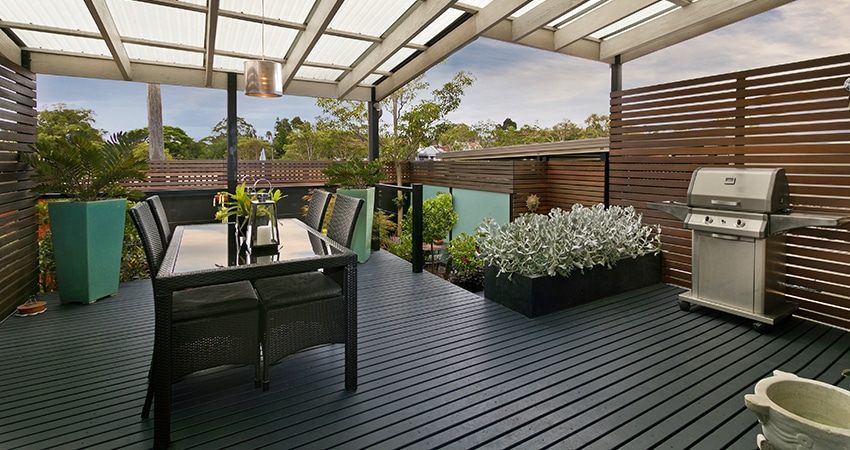
FAQs: About Guide To Cost Of Decking In NZ
Conclusion
Investing in a deck goes beyond enhancing your home’s outdoor aesthetics; it’s about crafting a multifunctional space that aligns with your lifestyle and boosts your property’s value. The journey to realizing your dream deck involves meticulous planning, choosing the right materials from a plethora of options like classic wood or modern composites, and engaging with seasoned professionals who can turn your vision into reality. This guide is crafted to provide you with comprehensive insights, from the initial design and material selection to finding the perfect contractor, ensuring a seamless integration with your home and lifestyle.
A well-executed deck project not only serves as a cozy retreat or a vibrant entertaining area but also stands as a testament to your personal style, enhancing both the functionality and aesthetic appeal of your outdoor living space. With the right approach, your deck can transform into a cherished sanctuary for making memories, celebrating life’s moments, and enjoying the beauty of nature, ultimately enriching your home and lifestyle.
Find A Builder Connect Approved Professional Deck Builder Near You!
- Balcony Construction Christchurch
- Deck Builders Alexandra
- Deck Builders Alexandra, Clyde & Cromwell
- Deck Builders Auckland
- Deck Builders Central Otago
- Deck Builders Christchurch
- Deck Builders Clyde
- Deck Builders Cromwell
- Deck Builders Hamilton
- Deck Builders Hawkes Bay
- Deck Builders Invercargill
- Deck Builders Kapiti Coast
- Deck Builders Lower Hutt
- Deck Builders Nelson
- Deck Builders Palmerston North
- Deck Builders Porirua
- Deck Builders Queenstown
- Deck Builders Taupo
- Deck Builders Upper Hutt
- Deck Builders Wanaka
- Deck Builders Wellington
- Deck Builders West Auckland
- Deck Staining Palmerston North
About the Author:
Mike Veail is a recognized digital marketing expert with over 6 years of experience in helping tradespeople and small businesses thrive online. A former quantity surveyor, Mike combines deep industry knowledge with hands-on expertise in SEO and Google Ads. His marketing strategies are tailored to the specific needs of the trades sector, helping businesses increase visibility and generate more leads through proven, ethical methods.
Mike has successfully partnered with numerous companies, establishing a track record of delivering measurable results. His work has been featured across various platforms that showcase his expertise in lead generation and online marketing for the trades sector.
Learn more about Mike's experience and services at https://theleadguy.online or follow him on social media:




